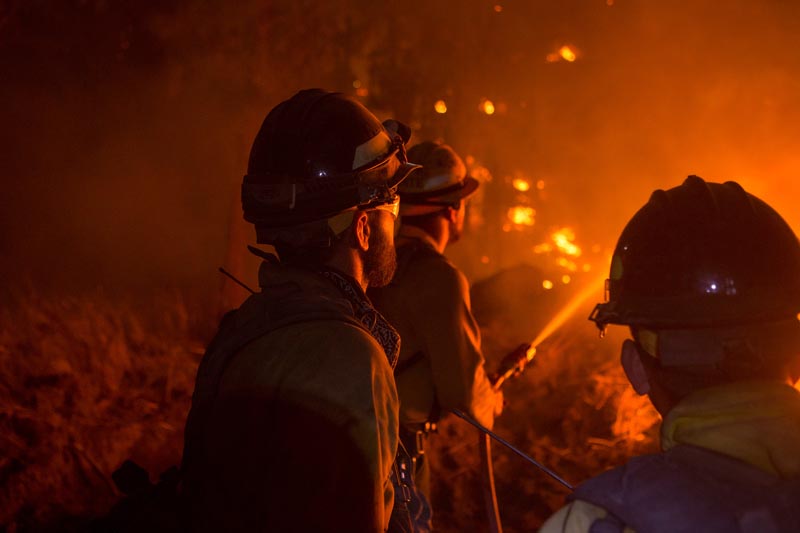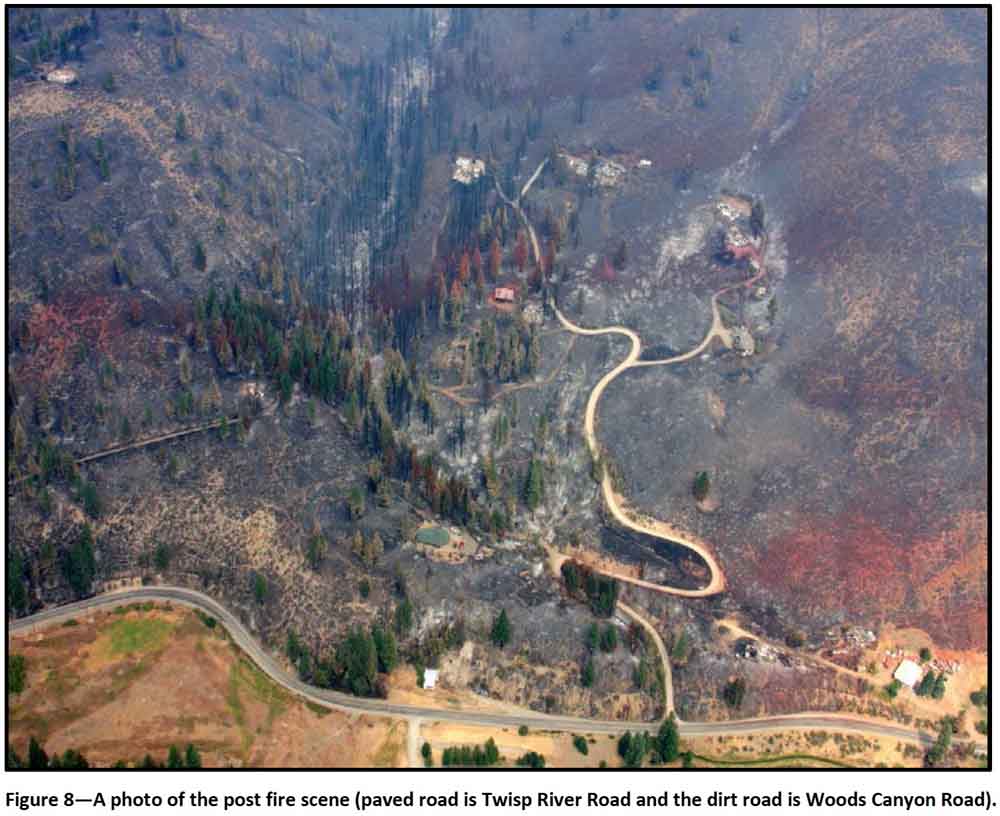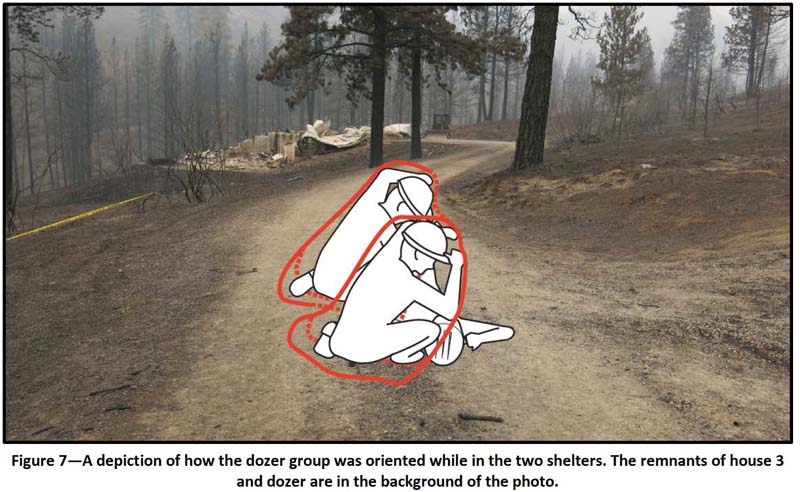Photo above: 19 white hearses brought the Granite Mountain Hotshots back to Prescott, Arizona, July 7, 2013. They were killed after being overrun by the Yarnell Hill Fire. Photo by Bill Gabbert.
A bill introduced in the Washington state legislature would provide for state employed firefighters a system that would track their location. Knowing where firefighters are while working on a rapidly spreading fire is crucial to ensuring their safety, and is half of what we have called Holy Grail of Firefighter Safety. The other half is knowing the real time location of the fire relative to the personnel. If a Division Supervisor, Operations Section Chief, or Safety Officer is monitoring this information they could potentially warn firefighters that their present position is in danger when the fire begins to spread in their direction. A system like this might have saved 24 lives on the 2013 Yarnell Hill and 2006 Esperanza Fires. In both cases the firefighters and their supervisors did not have a clear understanding of where the fire and the firefighters were.
In a January 18 article about how to reduce the number of fatalities on wildland fires, we wrote:
When you think about it, it’s crazy that we sometimes send firefighters into a dangerous environment without knowing these two very basic things.
Below is a section from House Bill 2924 as introduced in the Washington State Legislature on January 27, 2016, sponsored by six lawmakers:
…Require all fire suppression equipment and personnel in its employ or direction to be outfitted with an electronic monitoring device that utilizes global positioning system technology to protect the safety of wildland firefighters…
The Seattle Times wrote about the proposed legislation. Here is an excerpt:
…DNR has done some early research on GPS, according to Bob Johnson, the agency’s wildfire-division manager. Setting up a system could cost $1.5 million, Johnson told lawmakers.
“Improving safety for our firefighters is paramount and we’d view this technology … as a viable supplement to existing safety measures,” wrote Mary Verner, DNR’s deputy supervisor for resource protection. “Though, it, like many technologies, does have its limitations.”
Challenges, benefits
GPS locaters are used by various departments and agencies around the country, according to Triplett.
But there aren’t yet national standards for GPS systems, so when firefighters come from different agencies or another state to fight large blazes, they may not have equipment that works together, according to Triplett.
Steve Pollock, chief regional fire coordinator for the Texas A&M Fire Service, said it took about three years to develop that agency’s GPS system. When it goes live in July, it will be able to track more than 200 bulldozers, fire engines and coordinating vehicles, he said…
There needs to be leadership, nationally, to develop standards for firefighter tracking systems so that the devices used by different agencies are compatible and interoperable. This should be the duty of the National Wildfire Coordinating Group, National Association of State Foresters, U.S. Forest Service, National Park Service, and Bureau of Land Management.
If individual state and local organizations spend millions on stand-alone systems that can’t be used outside their jurisdictions it will be FUBAR. Leadership is needed. Today.










